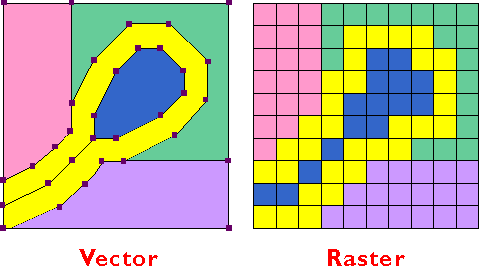PyVector Buffer
PyVector Buffer
Easy:
Imagine you have a big box full of toy cars. Each car is a different color and has a different number on it. Now, let’s say you want to keep track of all these cars in a special way, so you know where each car is and can easily find it or add new cars when you get more.
A PyVector Buffer is like a special organizer for your toy cars. Instead of just throwing all the cars into the box, you have a neat line where each car has its own spot. This organizer helps you do a few important things:
- Remember the Order: It keeps the cars in the same order you put them in. So, if you put a red car first, then a blue car, and then a green car, it will always stay in that order.
- Add New Cars Easily: If you get new cars, you can quickly add them to the end of the line without messing up the order of the other cars.
- Find Cars Quickly: If you want to find a specific car, you can easily check each spot in the organizer to see if it’s the one you’re looking for.
So, a PyVector Buffer is like having a really smart organizer for your toys that helps you keep them in order, add new ones, and find them quickly. It’s very handy when you have a lot of toys (or in the computer world, a lot of information) to manage!

Moderate:
A PyVector Buffer is a data structure in Python that provides a way to efficiently store and manipulate a sequence of numbers. It is part of the Python standard library and is commonly used in scientific computing and data analysis.
Here are some key points about PyVector Buffer:
- Efficient storage: PyVector Buffer stores numbers in a contiguous block of memory, which allows for fast access and manipulation of the data. This is particularly useful when dealing with large arrays of numbers.
- Fixed data type: When creating a PyVector Buffer, you need to specify the data type of the numbers it will store (e.g., integers, floats, etc.). This ensures that all elements in the buffer have the same data type, which is important for efficient memory usage and performance.
- Memory management: PyVector Buffer automatically manages the memory allocation for the buffer. When you create a PyVector Buffer, it allocates a block of memory to store the numbers. If you need to resize the buffer, it can automatically reallocate the memory as needed.
- Access and manipulation: You can access individual elements in a PyVector Buffer using indexing, just like with regular Python lists. You can also perform various operations on the buffer, such as appending elements, removing elements, or modifying existing elements.
- Interoperability: PyVector Buffer is compatible with other libraries and tools in the scientific Python ecosystem, such as NumPy. You can easily convert between PyVector Buffer and NumPy arrays, which allows you to leverage the wide range of functionality provided by NumPy and other libraries.
- Performance: PyVector Buffer is designed for performance. Because it stores numbers in a contiguous block of memory and has a fixed data type, operations on PyVector Buffer can be optimized for speed. This makes it particularly well-suited for numerical computations and algorithms that require fast access to large arrays of numbers.
PyVector Buffer is commonly used in scenarios where you need to efficiently store and manipulate large sequences of numbers, such as in scientific simulations, data analysis, and numerical algorithms. It provides a convenient and performant way to work with arrays of numbers in Python.
It’s worth noting that PyVector Buffer is a low-level data structure, and for most general-purpose programming tasks, you might find higher-level data structures like Python lists or NumPy arrays more convenient and easier to use. However, when performance is critical and you need fine-grained control over memory layout, PyVector Buffer can be a valuable tool in your Python programming toolkit.

Hard:
PyVector is a concept used in programming, particularly in languages like Python, to handle operations involving vectors. A vector, in this context, is essentially a list or array of numbers that represent a mathematical entity, such as a position in space or a direction. PyVector refers to the use of Python libraries or modules designed to work with these vectors efficiently.
One common tool for working with vectors in Python is NumPy, which provides a powerful object called `numpy.ndarray` for handling arrays of data. However, if we’re talking specifically about “buffer” in the context of PyVector, it might refer to how data is managed internally within these vector objects to optimize performance.
Understanding Buffers
In computing, a buffer is a region of physical memory storage used to temporarily store data while it is being moved from one place to another. Buffers are crucial for managing data flow between devices, processes, or threads, ensuring smooth and efficient data processing.
When we talk about a buffer in the context of PyVector (or any vector-like structure), we’re often referring to how the underlying system stores and manages the vector’s elements. For example:
- Memory Allocation: The buffer might allocate a contiguous block of memory to store the vector’s elements. This allows for fast access and manipulation since the elements are stored next to each other in memory.
- Data Transfer: When performing operations on vectors, such as adding two vectors together, the elements are transferred directly from one buffer to another without needing to copy each element individually. This is much faster and more efficient.
- Resizing: If a vector needs to grow or shrink, the buffer might need to reallocate its memory. Efficient buffer management ensures that this process is done quickly and without losing data.
Example with NumPy Arrays
Let’s look at a simple example using NumPy, a popular library for numerical computations in Python, which uses buffers under the hood to manage its arrays efficiently.
```python
import numpy as np
# Creating a NumPy array (vector)
vector = np.array([1, 2, 3, 4, 5])
print(“Original Vector:”, vector)
# Adding a scalar value to the entire vector
vector += 10
print(“Vector after addition:”, vector)
# Doubling the size of the vector
vector = np.append(vector, [6, 7, 8, 9, 10])
print(“Vector after appending:”, vector)
```
In this example, NumPy handles the internal buffering automatically. When we perform operations like adding a scalar to the entire vector or appending new elements, NumPy optimizes these operations by efficiently managing the buffer that stores the vector’s elements.
Buffers are a fundamental aspect of how data is processed and manipulated in computing, making operations like those performed on vectors much more efficient.

Comments
Post a Comment